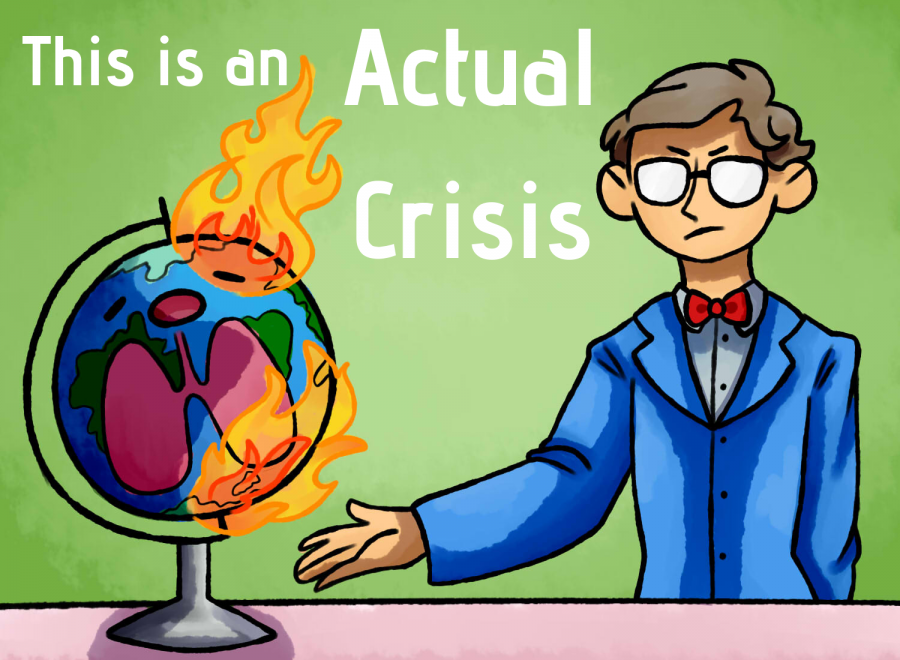The Amazon burns, along with hope for the future
It’s strange. Sometimes it takes forever to realize something so evident. After thousands of square kilometers of rainforest land burns, it’s an eye-opener as to how much the planet has been damaged and the harmful things humans do unintentionally and intentionally to the environment. Of course, it’s pretty hard to miss the fact that the environment has been under much harm. But what’s not as obvious is the severity of the problems impacting the Earth. Unfortunately, it can be hard to truly care about something until an enormous event occurs.
Here’s a very current issue: the Amazon Rainforest that is burning as this is being typed. The vivid, neon flames are a form of protest; a way in which the Earth is screaming in desperation. The “lungs of the Earth” have been on fire for about 3 weeks now. The Amazon Rainforest is regarded as the Earth’s “lungs” because it produces more than 20% of our planet’s oxygen. Researchers claim that these fires are, in fact, a result of human actions such as mining, drilling, and farming (Globalnews.ca). Global warming and deforestation are contributors as well. The rainforest has been catching on fire more frequently ever since the Earth started to experience climate spikes. To sum it up, this vast, extreme fire is mainly the fault of humans.
A few days ago, the forest fire brought a thick blackness to the skies of São Paulo, a big city almost 2,000 miles away from the Amazon. For many, this was the point when concern really struck. 17% of the rainforest has already burned away over the past 50 years and researchers expect 25% to 40% of the forest to be ablaze by the time the current fire meets its end. This is a devastating eye-opener. Luckily, there has been much more awareness brought to this issue in the past week.
A quick google search about environmental degradation will escort one to TheWorldCounts.com. By fault of deforestation, 5-10% of tropical forest organisms will go extinct every decade. 27% of the Earth’s coral reefs have been demolished and 60% more will languish within the next 30 years if this rate continues. The area of the garbage that is floating in our ocean, the “garbage island”, is the size of Mexico, India, and Europe combined. 80% of the world’s forests have been lost and we are currently losing 375 square kilometers of forest land per day. These are intense realities of the world and they really put things into perspective.
The environment really matters. The Earth is life. Without its resources, there’s no capability to live. Means of living are all derived from the environment and several world systems are based on the realities of the Earth. Sustainable living is truly important in order for future generations to have the resources humans need from the planet. But more than humans, there are 8.7 million other species in the world that deserve protection and stable habitats. The pollution, waste, and deforestation are not really helping. But then, what’s the alternative to cutting down trees? Wood and paper as materials have such large presences in the world. And how else can toxic gases be disposed of? These are difficult questions to answer, along with numerous others. Is it naive to complain about human damage to the environment when it’s very hard to come up with viable solutions? Possibly. It’s so easy to say that “xyz” and should be reduced and “abc” should be abolished, but it’s pretty difficult to figure out what material should be used as a paper substitute, for example. But when there is a will, there is a way. There must be some alternatives that can be enforced. Systems can be changed. They’ll have to be changed in order to save the Earth.
This story was updated on Aug. 29 to update the statistic on how much land is burning.

Madi Lumsden is a very outgoing person. She is often seen around the art hall playing her ukulele, carrying her pet mantis, Pepperoni, or ranting about...



Трамп, наконец, получил поддельные новости здесь • Aug 30, 2019 at 1:05 am
Well said comrade VOA.
vggirl • Aug 29, 2019 at 8:21 pm
The main driver for the burning of the Amazon was to deforest part of it for cows and to grow feed for the cows to raise them for meat so the only way that would have helped prevent companies setting the rain forest on fire is if people adopted a plant-based diet.
Carbon Sink • Aug 29, 2019 at 6:04 pm
@Reese B
While it is true that the Amazon does not produce that much oxygen, the NatGeo article you mentioned says “In its pristine state, it makes a significant contribution to pulling carbon dioxide out of the atmosphere.” And the PBS article states “The fact that this upsurge in deforestation threatens some of the most biodiverse and carbon-rich landscapes on Earth is reason enough to oppose it.” So, looking past the politically targeted language of the OneNewsNow article, I’d say that it’s still a huge issue. But yeah, inaccuracies like that are annoying, and it makes me scared of how people with different beliefs would communicate effectively.
VOA • Aug 29, 2019 at 1:15 pm
Ok, this article is so full of misinterpreted facts it’s astounding. for one the statement “After 5 million square kilometers of rainforest land burn” Is laughable. This is such a grossly incorrect statistic I couldn’t help but wonder if it was in some crude way satirical. The reason for this is that the Amazon Rainforest as a whole is 5.5 million kilometers so unless nearly the entire forest burned down without the world realizing this is false. But to the author’s credit, it was very clever to use kilometers instead of miles to produce a larger and “scarier” statistic that sounds way worse than the actual case. Next to your “Source” Globalnews.ca is such a biased source its astounding. I typed in that website onto google and immediately there were several sources indicating this is a very left-leaning website. I also read into some of their articles. one of them being the supposed super pathogen ravaging all immigrant detention centers that were facilitated by the republicans. Also that Sao Paulo situation would almost be concerning if it wasn’t for the fact that prevailing winds forced cold air to the city which caused fog and low dark cloud cover. So no it wasn’t a huge cloud of toxic smoke from the fire. And finally, the literal president of Brasil said that the fires were not caused by deforestation efforts or corporations. it was caused by a combination of an extremely dr season as well as many possible catalysts.
In conclusion, do not let false facts and exaggerated/manipulated statistics sway your opinion. always seek the facts.
Joseph Stalin • Aug 29, 2019 at 10:26 am
When is Metea Media going to cover the Epstein scandal? Isn’t this the biggest corruption case of the century?
Kaiser Karl I of Austria-Hungary • Aug 29, 2019 at 10:22 am
Thank you Metea Media for bringing the issue of the Amazon Rainforest burning. However, as important as the Amazon rainforest is the planet and global biodiversity, the assertion you have made that the Amazon rainforest is the “Lungs of the world” is false. The vast majority of the oxygen that is on our beautiful planet comes from the oceans through microscopic creatures called phytoplankton. How else would the Earth have gotten it’s oxygen if there are no plants on land 2.1 billion years ago from a primarily CO2 and methane based atmosphere? These phytoplankton have created as much as 50-80% of the total oxygen on Earth. The remaining oxygen on Earth is created through the forests and rainforests of the world primarily the massive Siberian boreal forests and of course the mighty Amazon rainforest. It is no coincidence the Amazon rainforest is burning is is deliberately staged by mega corporations and their farmer puppets in losing a legal battle against natives for the protection of their tribal and ancestral lands in an act of revenge and ethnic cleansing to forcibly drive them off their land. President Bolsonaro isn’t going to help because he is a stooge for those corporations and would gladly see those natives perish in order to exploit the lands of the rainforest for “development.”
Reese B • Aug 29, 2019 at 7:56 am
Um sorry to be critical of this but the Amazon does not produce 20% of the world’s oxygen as disproven on multpile accounts by the likes of National Geographic, representatives from NASA and PBS news, links to my sources are here: https://www.nationalgeographic.com/environment/2019/08/why-amazon-doesnt-produce-20-percent-worlds-oxygen/
https://onenewsnow.com/science-tech/2019/08/27/climate-alarmism-over-amazon-fires-doused-by-nasa-scientists
https://www.pbs.org/newshour/science/no-the-amazon-fires-wont-deplete-the-earths-oxygen-supply-heres-why
Emmaaa • Aug 29, 2019 at 6:39 am
Recycled paper should be used more often as new paper!